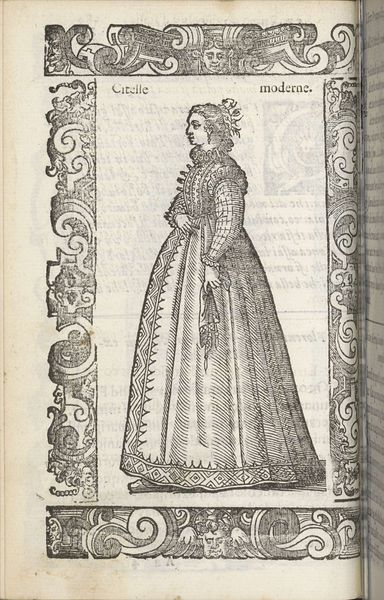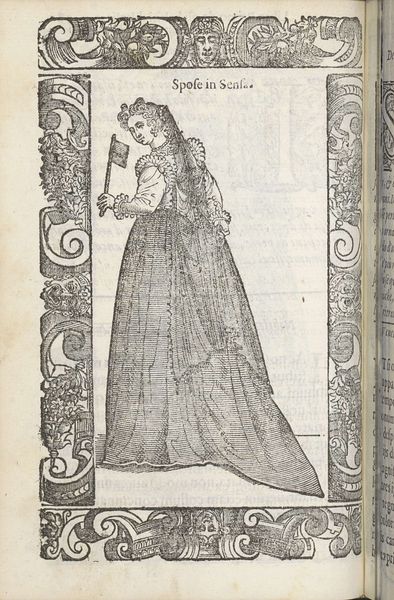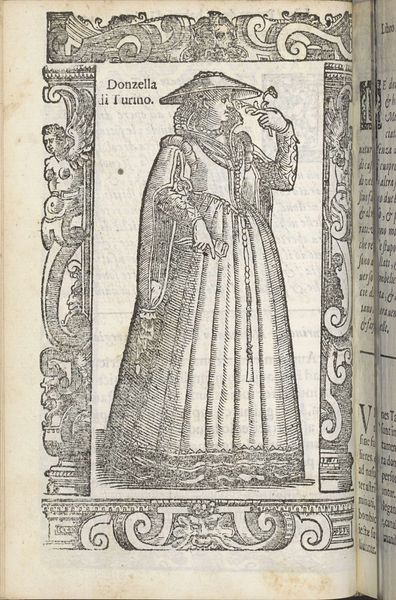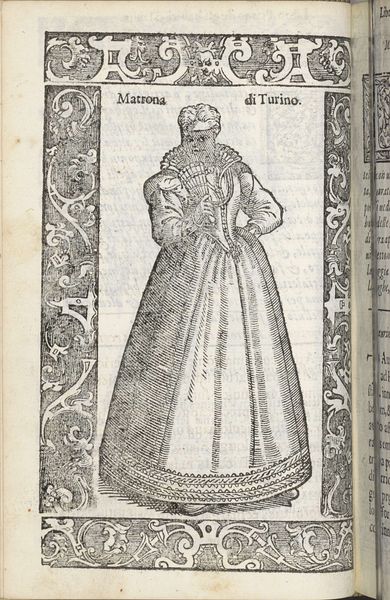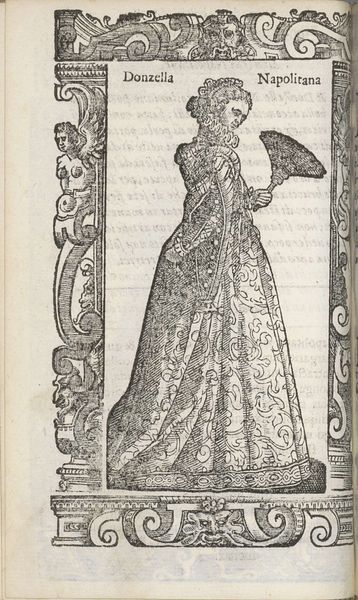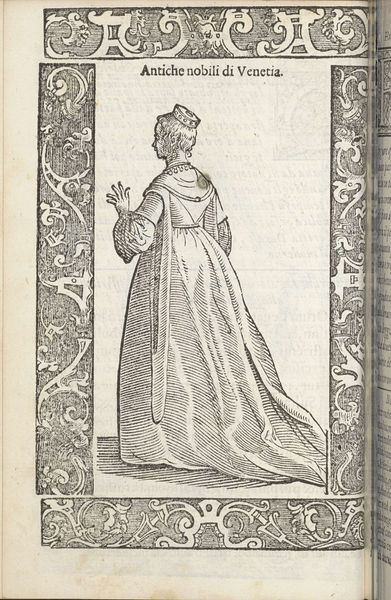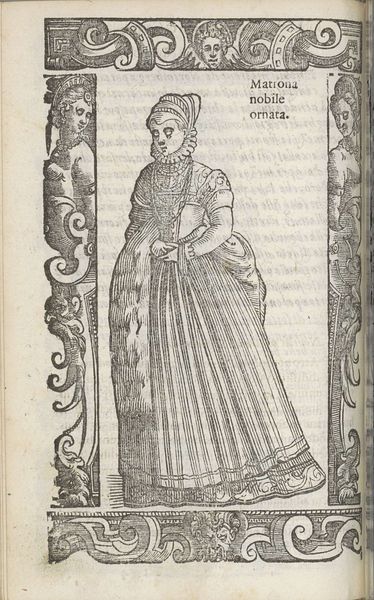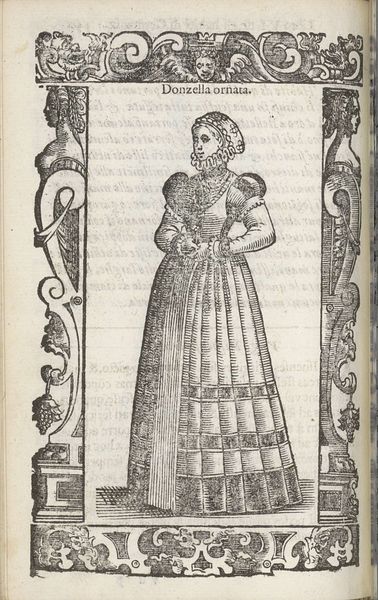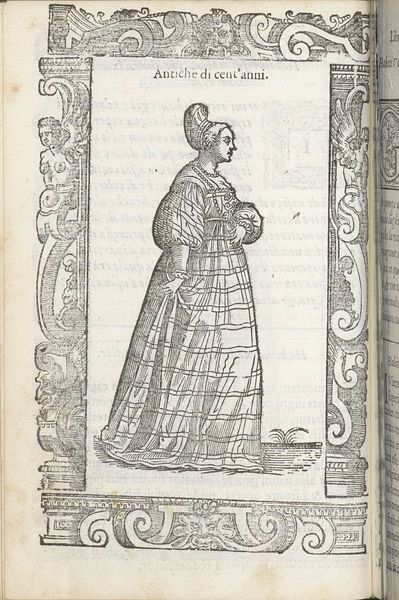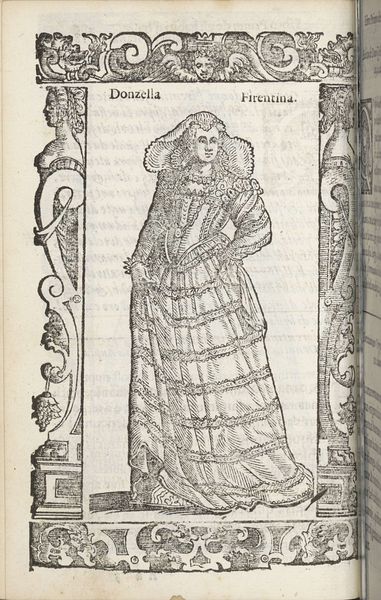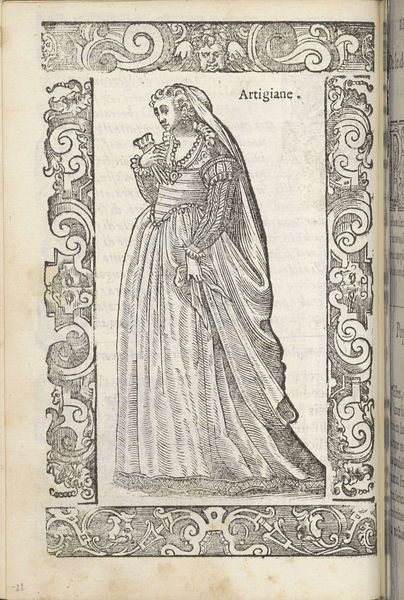
drawing, print, pen, engraving
#
portrait
#
drawing
# print
#
pen sketch
#
mannerism
#
figuration
#
pen
#
genre-painting
#
dress
#
engraving
Dimensions: height 167 mm, width 125 mm
Copyright: Rijks Museum: Open Domain
Editor: We’re looking at a print from 1598 by Christoph Krieger, titled "Ongetrouwd boerenmeisje uit Toscane"—an Unmarried Farm Girl from Tuscany. It’s an engraving. I’m immediately drawn to the intricate details of her dress, rendered with such precision. What strikes you most about the composition? Curator: Indeed, the dress is a key element. Note how the artist has used line variation to create a sense of depth and texture in the fabric. Observe the tight bodice contrasted with the skirt’s gentle flare. The dress is highly ornamented but how do you account for the borders surrounding the main image? Editor: They're quite ornate, almost like a frame within a frame. So it adds to the sense of it being a captured moment. What would you say about the role of the borders, aesthetically speaking? Curator: The borders enhance the print's structured composition, while simultaneously creating an ironic dissonance between art and documentation. Notice how these decorations serve a double function as commentary within the print itself. Editor: Interesting point. It’s almost as though the artist is highlighting the artificiality of representation itself. This discussion made me observe all of its aspects; how about you? Curator: Quite. Focusing on the work's intrinsic formal elements reveals a complex interplay of line, form, and space. I am inclined to reconsider art-making by contextualizing, comparing, isolating and abstracting visual forms.
Comments
No comments
Be the first to comment and join the conversation on the ultimate creative platform.

